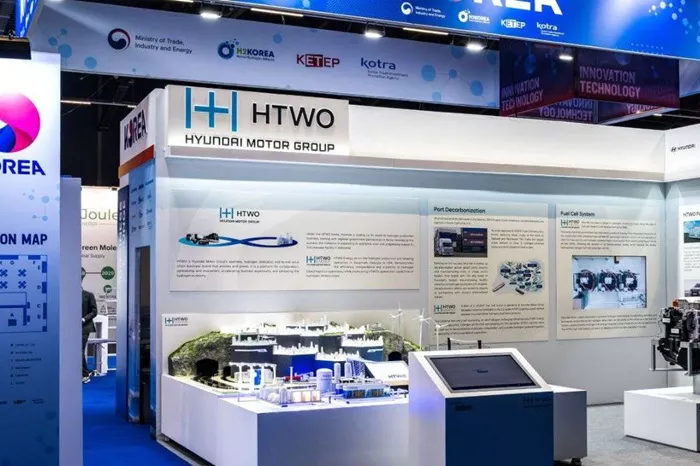Hyundai Motor Group showcased its leadership in hydrogen technology at the World Hydrogen Summit 2025. The event took place from May 20 to 22 in Rotterdam, Netherlands. Hyundai actively joined both the exhibition and strategic Roundtable sessions. The Group shared its hydrogen projects and helped shape the future of the hydrogen economy.
At the Korea Pavilion, organized with H2KOREA, Hyundai presented its hydrogen value chain under the HTWO brand. The display featured advanced hydrogen-powered technologies. These included fuel cells for trucks, buses, trams, and forklifts. A detailed model showed a hydrogen-integrated society. This included power generation systems and transport solutions. The exhibit aligned with global goals to reduce emissions in ports and cities, supporting the Port of Rotterdam’s environmental plans.
Other participants at the Pavilion included KOTRA and Doosan Fuel Cell. Together, they highlighted South Korea’s role in hydrogen innovation worldwide. Jaehoon Chang, Vice Chair of Hyundai Motor Group and Co-Chair of the Hydrogen Council, spoke at the Ministerial-CEO Roundtable. This session focused on combining government and industry efforts to build hydrogen infrastructure and boost its use. Chang stressed the need for standardization and cooperation to expand the hydrogen value chain and support the shift to a low-carbon future.
At a high-level roundtable, hosted by the Netherlands and Brazil—chairs of the International Hydrogen Trade Forum (IHTF)—global leaders gathered. The event was held in partnership with UNIDO and the Hydrogen Council. Discussions focused on hydrogen’s role in industrial growth, energy transition, and international collaboration.
The participants agreed on three key priorities for global hydrogen trade. First, they called for national financial incentives to speed up hydrogen development. Second, they emphasized using hydrogen to unlock wider economic and industrial benefits across regions. Third, they supported expanding sustainable infrastructure and product standards. These steps aim to strengthen international trade networks and supply chains to meet growing global demand.

